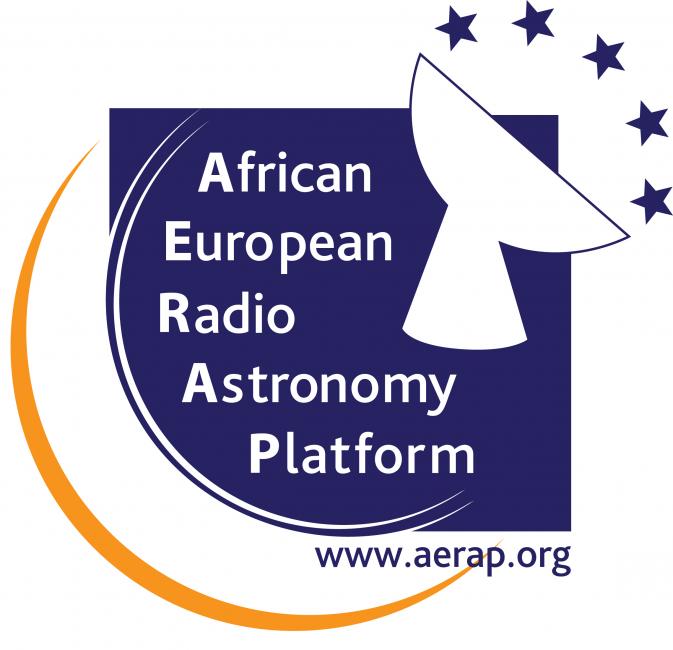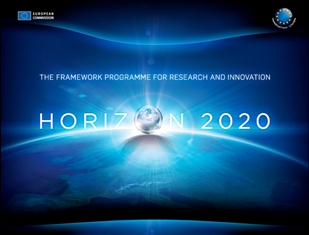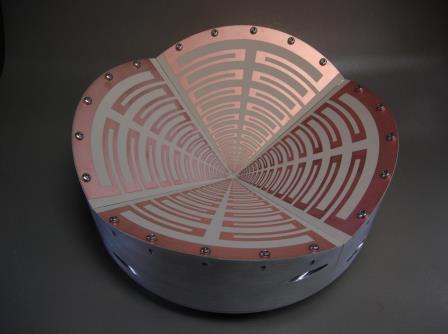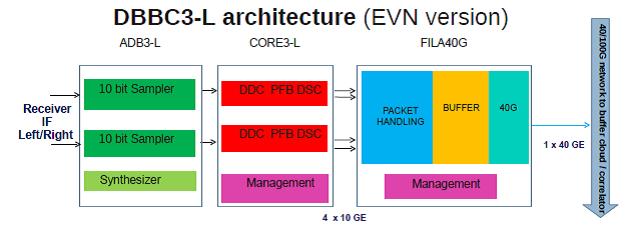RadioNet 3 NEWSLETTER No. 2
9 May 2013
Dear friends and colleagues,
Since the last RadioNet3 Newsletter, a lot has happened. The RadioNet3 Board had his first face-to-face meeting since the kick-off meeting in February last year. Our Management Team and me try hard ,and with success, to give RadioNet3 and European radio astronomy more and more a face at the international level..... Find here the most interesting details of the RadioNet3 achievements in the last months...
With my best wishes
Prof. Dr. J. Anton Zensus, Project Coordinator, (MPIfR)
RadioNet3 Board meeting
The first face-to-face Board meeting after the kickoff meeting of February 2012 in Bonn, was held in Bologna, Italy on March 18th 2013, chaired by Rafael Bachiller and very well organized by Tiziana Venturi. TNA, JRA, and NA leaders presented the activities since the previous Board teleconference. The document "RadioNet3 Study Group: Organization of Radio Astronomy in Europe" was presented by Mike Garrett, who stressed the many changes in radio astronomy in the last years. He added that EC asked the community to participate influencing the reorganization of radio astronomy. The document was subject to a deep discussion. Comments will be incorporated in an up-to-date version which will be later voted by Board Members. Phil Diamond, SKA Director, presented the status of the SKA project, Micheal Grewing the ASTRONET activities, in particular those connected to radio astronomy, and Patricia Vogel illustrated the achievements of the GO-SKA project. In the discussion that followed, partners were reminded that according to the original proposal, RadioNet3 developments could contribute to the SKA process and community building. RadioNet3 activities can be conducted in this spirit. Developments could contribute to the SKA process and community building. Grewing stressed that in September 2010 the Astronet Board decided to install the "European Radio Telescope Review Committee" (ERTRC) in coordination with RadioNet. The ERTRC's remit is to deliver to ASTRONET, in concert with RadioNet, a strategy to optimize the use of radio telescopes by the European astronomical community, both in the short- as well as in the medium- to long-term.

Short News:
New members of Board have been appointed:
INAF: Dr. Tiziana Venturi
AALTO: Juha Kallunki
STFC: Prof. Brian Ellison
IRAM: Dr. Karl Schuster
New member of the Management Group Team appointed:
Jacqueline Casado-Iglesias M.A.: Project Assistant, replacing Andrea Danzel in maternity leave.
EU Science: Global Challenge, Global Collaboration (ES:GC2)
On 4th-8th of March 2013, the European Parliament co-hosted a major conference in Brussels titled "EU Science: Global Challenges, Global Collaboration" (ES:GC2) in association with the Irish EU Presidency. The conference aimed at placing EU research at the centre of a global discussion on the scientific response to global challenges, bringing together scientists and science policymakers from 5 continents (www.globalsciencecollaboration.org).
In the framework of this conference two (African European Radio Astronomy Platform (AERAP) events took place on the 6th and 7th of March. The European Parliament's AERAP Group reviewed an AERAP framework programme for collaboration and discuss how the European Parliament can contribute to its implementation. Additionally researchers, engineers and industry worked together in order to prepare concrete projects and actions that will contribute to achieving the AERAP Framework Programme objectives.
Horizon 2020
 Horizon 2020 was also one of the main topics of the "EU Science: Global Challenges, Global Collaboration" (ES:GC2). Izabela Rottmann, RadioNet3 Project Manager, took part to the presentations of this next Framework Programme.
Horizon 2020 was also one of the main topics of the "EU Science: Global Challenges, Global Collaboration" (ES:GC2). Izabela Rottmann, RadioNet3 Project Manager, took part to the presentations of this next Framework Programme.
Horizon 2020 is the financial instrument implementing the Innovation Union, a Europe 2020 flagship initiative aimed at securing Europe's global competitiveness. Running from 2014 to 2020 with an €80 billion budget, the EU's new programme for research and innovation is part of the drive to create new growth and jobs in Europe.
The Parliament and Council negotiations on EU budget 2014-20 (including overall budget for Horizon 2020) is on-going. The adoption of legislative acts by Parliament and Council on Horizon 2020 is expected by the end 2013. The proposed support for research and innovation under Horizon 2020 will strengthen the EU's position in science with a dedicated budget of € 24 598 million. This will provide a boost to top-level research in Europe, including an increase in funding of 77% for the very successful European Research Council (ERC).
The first calls of Horizon 2020 will be launched on January 1st 2014. The main subject of Horizon 2020 is "Excellent Science, Competitive Industries and Better Society. Horizon 2020 aims to the continuation of the successful FP7 Integrating Activities.
(http://ec.europa.eu/research/horizon2020/index_en.cfm?pg=home&video=none)
RadioNet "Advance Radio Astronomy in Europe" listed in the Assessment report on Research & Innovation of the European Commission
The European Commission recently made public the "Consultation on possible topics for future activities for integrating and opening existing national research infrastructures - Assessment report" (February 2013).
RadioNet "Advance Radio Astronomy in Europe" is in the list of topics with high potential and with merit for future Horizon 2020 actions. The consultation, addressed to stakeholders, i.e. operators of research infrastructures and user communities, was open from 15 July to 22 October 2012. The report describes the results of the assessment of topics submitted within the consultation, which was carried out by independent experts.
(http://ec.europa.eu/research/infrastructures/index_en.cfm?pg=consultation)
RadioNet at EWASS2013
RadioNet3 will organize a Special Session (Sp2) at the coming European Week of Astronomy and Space Science (EWASS2013) on 08 July 2013. The EWASS2013 Conference will be held in Turku, Finland, 08-12 July 2013 (http://www.astro.utu.fi/EWASS2013/) entitled "The role of modern radio observatories in black hole and jet studies".
Invited Speakers are: Prof. Andreas Eckart (University of Cologne), Prof. Heino Falcke (IMAPP, Radboud Universiteit,Nijmegen), Dr. Mikhail Popov (Astro Space Centre, Moscow), and Prof. Eduardo Ros (University of Valencia).
A call for submission of abstracts has been distributed.

RadioNet3 Networking Activities News
Network Activities (NAs) transform the way science is conducted in Europe. NAs foster interaction and collaboration among astronomers and engineers trough providing financial support for organisation of and participation at workshops, conferences, and training events.
QueSERA is a NA which aims at to better integrate, represent and advertise the radio astronomical facilities and ambitions on a national and European level. It has recently distributed a Call for proposals for "Travel support for advertising RadioNet science". The RadioNet work package QueSERA (addressing Questions on Structuring European Radio Astronomy, see www.radionet-eu.org) is providing opportunities for travels by supporting two possible actions: 1) colloquia at astronomy institutes or national astronomy conferences in countries with little radio astronomy tradition; 2) talks at conferences with astrophysics topics that have made limited use of radio astronomy techniques (so far).
The aim of these is to entertain fellow astronomers who have typically not used RadioNet facilities with the excitement of modern Radio Astronomy.
SCIENCE WORKING GROUP (SWG) & New Skills for astronomers, are NAs which act to disseminate knowledge and scientific results, and to train astronomers for future radio astronomy facilities are providing. Considering the many events supported in 2012 statistical considerations can be derived.
Events 2012 Statistics
ALMA & SKA were the most frequently subjects of supported conferences. The majority of the participants came from European Institutes. Many participants also came from non-European countries, showing that the popularity of the RadioNet3 events is growing world-wide. 40% of the participants were women.
Past meetings & events supported by SWG and New Skills are:
- YERAC in Russia 18th- 21th September 2012
- EVN Symposium in Bordeaux, 10-12 October 2012
- EVN CBD meeting in Madrid, November 2012
22-26 Apr. 2013, Bonn, DE, Conference: "The Modern Radio Universe"
Future meetings & events
Conference 'Neutron Stars‘ 6-10 May 2013, Amsterdam, NL
in which a program highlighting the most recent results on radio (e.g. LOFAR, GBT, Arecibo) and high-energy (e.g. Fermi) searches for new pulsars as well as cutting-edge results from studies of known neutron-star systems and their surroundings is envisaged.
Workshop 'Locating Astrophysical Transients' 13-17 May 2013, Leiden, NL
New generation wide-field instruments, especially SKA pathfinders in the radio regime, will detect a huge number of transient sources that can be followed-up by very long baseline interferometry (VLBI) at the highest possible angular resolution. Finding and localization of these, as well as discussing the science case and realization of high resolution observations in multi-wavelength transient projects, is the main focus of the workshop. The science topics covered will be Galactic neutron stars (pulsars) and black holes, gamma-ray binaries, unidentified TeV sources, novae, supernovae, GRB, tidal disruption events and astrophysical sources of gravitational waves.
Workshop 'The Innermost Regions of Relativistic Jets and Their Magnetic Fields' 21.10-14 June 2013, Granada, ES
The meeting will focus on the study of the innermost regions of AGN jets to obtain a better understanding of the jet formation mechanisms and determine the origin and location of the high energy emission, as well as the role played by the magnetic field.
Workshop ' Radio Halos of Galaxies' 1-5 Jul. 2013, Leiden, NL
The science goals include probing the origin of and physical conditions in galaxy halos, searching for clues on lagging halos, understanding cosmic ray transport and wind speed, mapping magnetic fields in galaxy disks and halos, extending the far-infrared - radio continuum relation into halos, providing input for high-energy (gamma ray) models, and developing a repository of publicly-accessible 'legacy-value' radio images for future study.
MARCuS, a NA which supports user visits to the seven nodes of the EU ARC network, made available the updated versions of the 'User Guide to the European ARC'. For more information, link to http://almascience.eso.org/documents-and-tools/cycle-1/eu-arc-guide
ERATec, was established to foster the collaboration among engineers and scientists. ERATec organized the 1st RadioNet3 European Radio Astronomy Technical Forum Workshop Week (April, 8th - 12th 2013; Max-Planck-Institute for Radio Astronomy in Bonn, Germany). The "Radio Interference in large bandwidth observations" workshop was followed by the EVN Technical and Organizational Group meeting. During the last three days, participants could join seminars on Synergies at Radio Observatories, Hands-on activities on the DiFX correlator, DBBC Hands-On and Operation workshops, and VLBI Data.
Spectrum Management, has as its main task to keep the radio astronomy frequency bands free of man-made interferences. There have been some personnel changes. Hans van der Marel, ASTRON, the Netherlands, is the new CRAF chair since February 1, 2013. Axel Jessner was thanked for all his efforts as chairman. Furthermore, Harry Smith, CRAF Frequency Manager, has decided to resign from May 2013. H. Smith was also thanked for all his efforts as Frequency Manager. M. Lindqvist, NA Leader, reports that CRAF is an Expert Committee of the European Science Foundation (ESF). ESF will cease to exist as a legal entity from January 2015. The successor to ESF,
Science Europe, has decided not to host any Expert Boards and Committees. CRAF is looking for different alternatives for a new host organization.
RadioNet3 Transnational Access (TNA)
The TNA programme is designed to stimulate the full exploitation of the open skies policy. It offers access to several radio telescopes and arrays covering an unprecedented range of wavelengths (from 10 MHz to 1 THz) and resolving power (from arc-minutes to milli arc-seconds). NA is offering 3000 hours (out of 1600 expected for the first 18 months) of access to the leading radio telescopes. More than 700 users have been hosted.
The Sardinia Radio Telescope, is now in the Technical Commissioning. The distribution of a Call for Proposals for observations in 2014 is expected by the end of 2013.
JCMT asked for withdrawal from the RadioNet3 project, with retroactive effect from January 1st, 2012.
Joint Research Activity DIVA highlights
RadioNet3 JRAs support target Research & Development activities, aiming to a more efficient use of telescope hardware, to increase the observing bandwidth (beyond 1 THz), and to increase the field of view of the telescopes (multi-feeds, phased array). The RadioNet3 JRAs started in July 1st, 2012.
DIVA develops advanced technology for wide-bandwidth Very Long Baseline Interferometry recording systems, in particular:
a) Wide-band feed: operational benefits, increased survey speed, and a significant cost saving almost achieved with the wide-band Eleven feed developed in Europe through OSO/Chalmers. The possibility of significantly larger instantaneous bandwidth observations will be created. The bandwidth for the DIVA1 feed will be 1-4 GHz as minimum requirement. Within the SKA program this will be applicable for the Advanced Instrumentation Program (AIP).
The circular Eleven antenna feed

b) DBBC3: One way to increase the sensitivity of a VLBI network is to increase the observing bandwidth. A maximum of 4 Gbps with the present DBBC2 is the data rate which is under test in the EVN now. In preparation for receivers and IF systems which will deliver up to 4 GHz (and later more) bandwidth to the back-ends to develop a system which can process an instantaneous bandwidth of 4 GHz per polarization as a minimum is necessary. Such a backend is the intermediate goal of the DBBC3 project.
DBBC3-L block diagram.

The system consists of an analogue to digital converter "ADB3-L", the
processing unit with a powerful FPGA "CORE3-L", and the unit responsible for transporting the processed and formatted data onto 40/100 Gb Ethernet "FILA40G".







